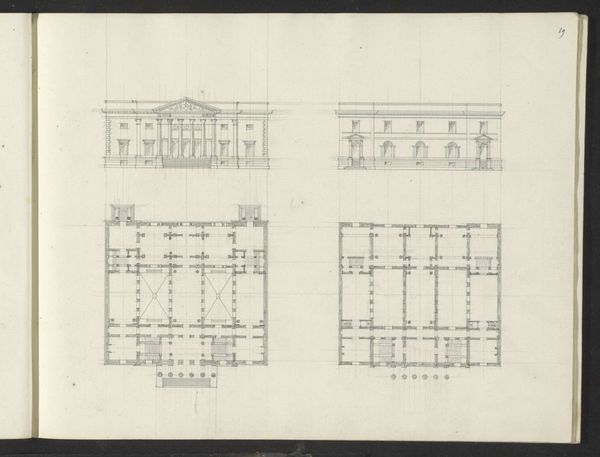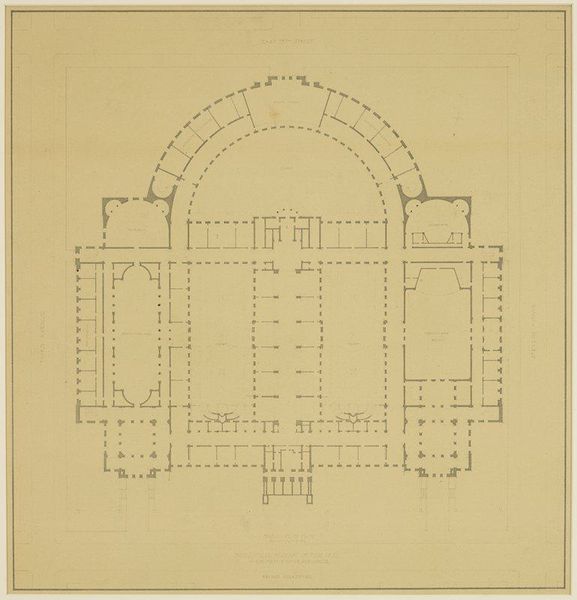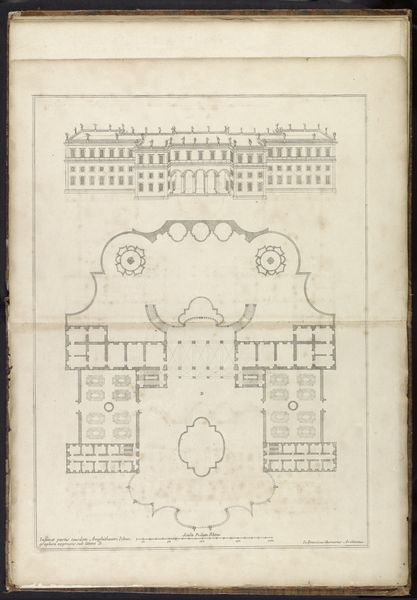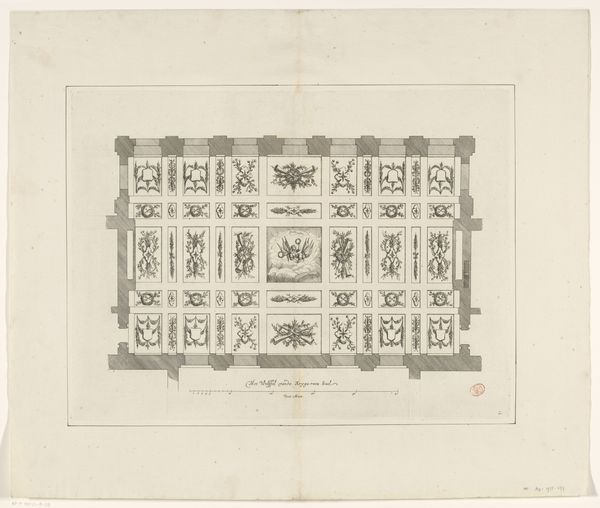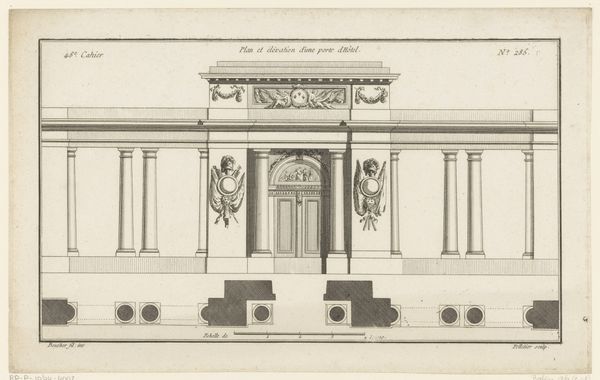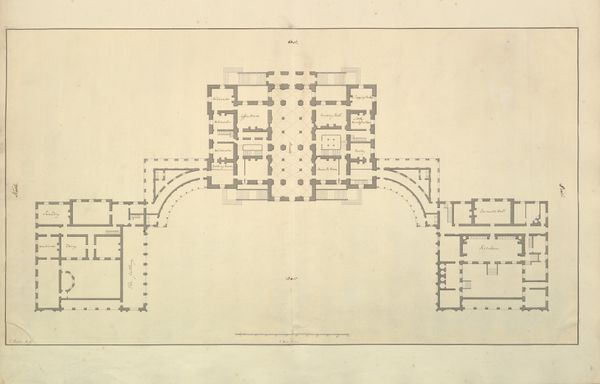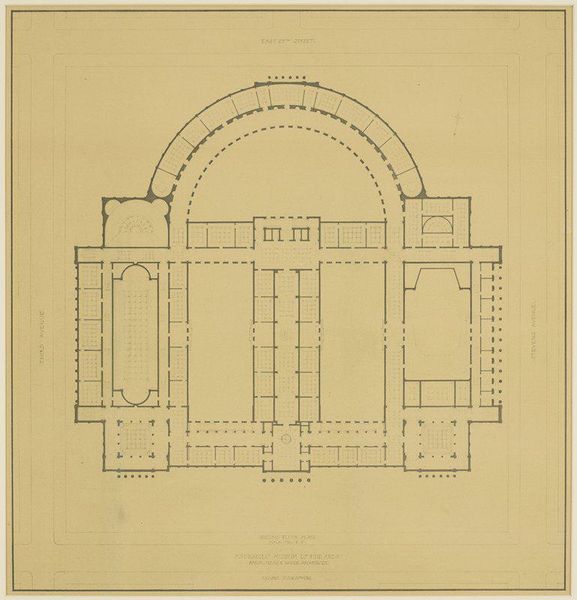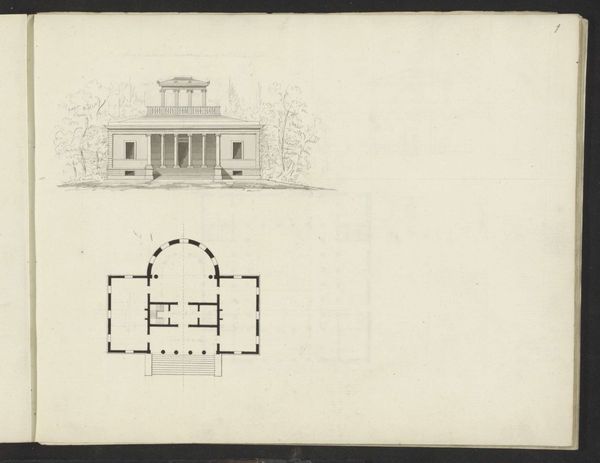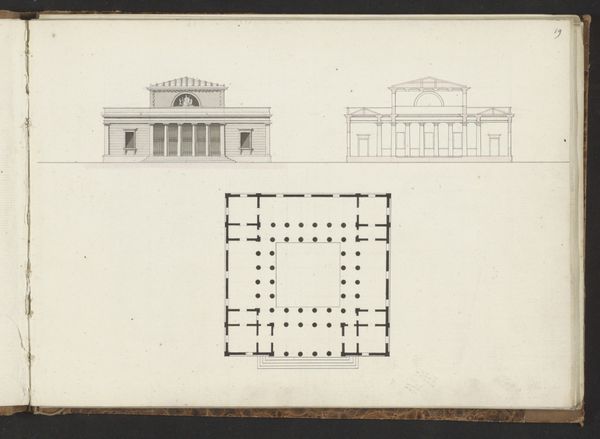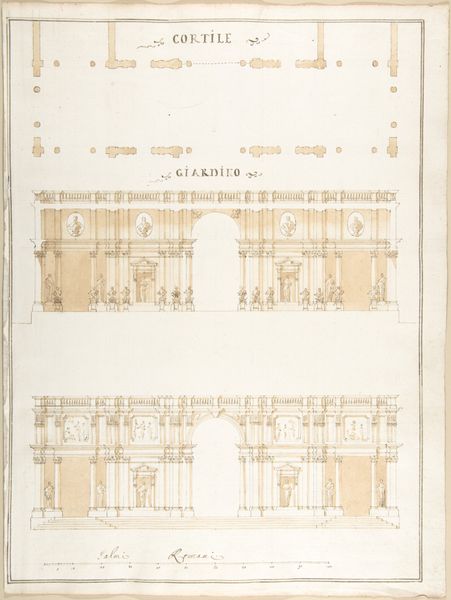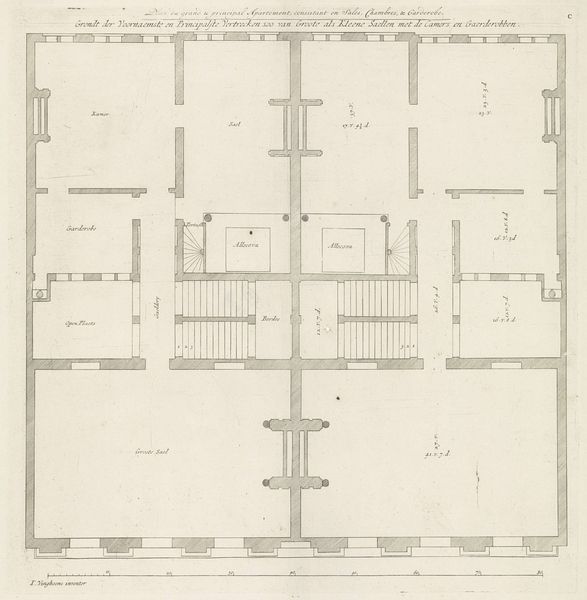
North Elevation and Ground Plan of the Alexander Palace at Tsarskoe Selo 1792 - 1796
0:00
0:00
drawing, print, watercolor, architecture
#
drawing
#
neoclacissism
# print
#
landscape
#
watercolor
#
arch
#
watercolour illustration
#
architecture
Dimensions: 19-1/8 x 26-5/16 in. (48.5 x 66.8 cm)
Copyright: Public Domain
Editor: So, this is Giacomo Quarenghi's "North Elevation and Ground Plan of the Alexander Palace at Tsarskoe Selo," dating from 1792-1796. It's a drawing with watercolor, showcasing the palace's design. I’m struck by the rigidity and the stark contrast between the detailed elevation and the almost abstract floor plan. How do you interpret this work, particularly considering its historical context? Curator: This piece speaks volumes about power, control, and the architectural language used to express those concepts during the late 18th century. The neoclassical style, with its emphasis on symmetry and order, visually reinforces the ideals of rationality and imperial authority embraced by Catherine the Great and, later, Alexander I. We must ask, how does this architectural rendering function as a statement of Russian ambition on a global stage? Consider how the clean lines and geometric precision minimize any sense of the human scale, turning inhabitants into symbolic actors within a meticulously designed system. Editor: That’s fascinating! I hadn't considered the depersonalization aspect. So the rigid structure wasn't just about aesthetics, but also about enforcing a social order? Curator: Exactly! Architecture, like any art form, is never neutral. Buildings embody ideologies. How does this structure dictate movement, constrain interaction, and ultimately reinforce hierarchical relationships? The Alexander Palace wasn’t simply a residence; it was a carefully curated stage for projecting power and maintaining the status quo in a society grappling with inequality and unrest. Editor: That makes so much sense. I see the palace now not just as a building, but as a tool of governance, influencing society even through its design. Thanks for this perspective. Curator: And for me, thinking about architecture as political language prompts further interrogation of who benefits from these planned spaces and whose stories are left unacknowledged within those walls.
Comments
No comments
Be the first to comment and join the conversation on the ultimate creative platform.
